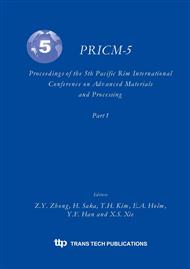p.1059
p.1063
p.1067
p.1073
p.1077
p.1083
p.1087
p.1091
p.1097
Determination of Friction and Wear of Engineering Polymers by Means of Large-Scale Specimen Testing
Abstract:
Although tribological tests on polymers are traditionally performed on small-scale pin-on-disc or bloc-on-ring configurations, present sliding tests under high load provide more accurate de-sign data. For wear tests on large samples edge effects, stress concentrations and the moveability of wear debris into the contact zone are simulated close to practice. It is illustrated that friction is gene-rally lower compared to small-scale tests, while overload and deformation occur more frequently.
Info:
Periodical:
Pages:
1077-1082
Citation:
Online since:
January 2005
Authors:
Keywords:
Price:
Сopyright:
© 2005 Trans Tech Publications Ltd. All Rights Reserved
Share:
Citation:


